Public opinion and media debates around Adolf Hitler's rise to power—discover key moments of controversy.
Adolf Hitler's ascent to power began in 1919 when he joined the German Workers' Party, which he transformed into the Nazi Party and became its leader in 1921. Exploiting the Weimar Republic's instability, Hitler gained popularity through propaganda and promises of national restoration. While initially espousing some anti-capitalist ideas, he later purged those elements to gain support from industrialists. Key to consolidating his authority were ruthless tactics, including the Night of the Long Knives, which eliminated internal opposition and solidified his control over the Nazi Party.
September 1921: Disruption of Bavarian League meeting
In September 1921, Hitler and SA members disrupted a Bavarian League meeting at the Löwenbräukeller, an organization that opposed the Weimar Constitution's centralism. Hermann Esser blamed Jews for Bavaria's issues, and Nazis demanded Otto Ballerstedt yield to Hitler, leading to Ballerstedt's beating and removal. Hitler and Esser were arrested, with Hitler stating they achieved their goal of silencing Ballerstedt.
November 1921: Nazi Party public meeting in Munich Hofbräuhaus
In November 1921, the Nazi Party held a large public meeting in the Munich Hofbräuhaus. After Hitler's speech, a melée erupted, with the SA defeating the opposition.
November 1923: Beer Hall Putsch and Hitler's Arrest
On November 8-9, 1923, Hitler led the Beer Hall Putsch in Munich, attempting to depose Bavarian government officials and establish a base for marching on Berlin. Around 2,000 Nazi Party members marched to Marienplatz but were stopped by police. Sixteen Nazis and four officers died. Hitler was arrested on November 11, 1923 and charged with high treason.
February 1924: Trial for high treason begins
In February 1924, Hitler's trial for high treason began. He attempted to put democracy and the Weimar Republic on trial, portraying them as traitors.
October 1924: Public declaration of citizenship
In October 1924, as his citizenship became a topic of public debate, Hitler had a public declaration printed.
January 1930: Horst Wessel fatally shot, becomes Nazi propaganda opportunity
In January 1930, Horst Wessel was fatally shot by KPD members in Friedrichshain following an argument. Goebbels used Wessel's death and the Horst-Wessel-Lied as anti-Communist propaganda.
October 1930: SA's anti-Jewish action at Potsdamer Platz
On October 13, 1930, the SA began its first major anti-Jewish action, with Nazi brownshirts smashing windows of Jewish-owned stores at Potsdamer Platz.
March 1931: Prussia re-enacts ban on Brownshirts and Goebbels speaking ban
In March 1931, Prussia re-enacted its ban on Brownshirts. Days after the ban, SA-men shot dead two communists, leading to a ban on Goebbels' public speaking.
1931: Rising SA Deaths
By the end of 1931, the SA had suffered 47 deaths and the Rotfront recorded losses of approximately 80 killed.
April 1932: Banning of Nazi Party Paramilitaries
On April 13, 1932, following the presidential elections, the German government banned the Nazi Party paramilitaries, the SA and the SS, on the basis of the Emergency Decree for the Preservation of State Authority. This ban was later lifted on June 16 by Franz von Papen.
April 1932: Presidential Election Loss and Street Fights
Throughout February and April 1932, street fights and beer hall battles resulted in deaths amidst Adolf Hitler's presidential election competition against Hindenburg. On April 10, 1932, Hitler lost the election to Paul von Hindenburg.
July 1932: Nazi Party Gains in Federal Election
In the federal election of July 1932, the Nazis won 37.3% of the popular vote, becoming the largest party in the Reichstag. Following this, the KPD increasingly turned towards violence, leading to battles and the assassination of SA leader Axel Schaffeld on August 1.
February 1933: Reichstag Fire and Decree
In February 1933, the Reichstag was set on fire, and Hitler used this as a pretext to pass the Reichstag Fire Decree, curtailing civil liberties and rights.
March 1933: Passage of the Enabling Act
Following the Reichstag fire, in March 1933, the Nazis suspended civil liberties and eliminated political opposition. On March 23, 1933, Hitler secured the passage of the Enabling Act, granting him plenary powers to act without parliamentary consent or constitutional limitations.
July 1933: Outlawing of Non-Nazi Parties
In July 1933, after the passage of the Enabling Act, Hitler abolished the powers of the states and the existence of non-Nazi political parties. Non-Nazi parties were formally outlawed on July 14, 1933, and the Reichstag abdicated its democratic responsibilities.
1933: Continuation of Nazi campaigning tactics
From 1931 to 1933, the Nazis combined terror tactics with conventional campaigning: Hitler traveled across Germany by air, while SA troops paraded, beat up opponents, and disrupted their meetings.
1933: Conviction and Release of SA Men
In 1933, five SA men were convicted and sentenced to death for the murder of a KPD member in Potempa. The sentences were commuted to life imprisonment, but they were freed after just over four months following a 1933 amnesty by Hitler.
August 1934: Consolidation of Power after Hindenburg's Death
After the death of Hindenburg in August 1934, Hitler combined the positions of President and Chancellor into one office, solidifying his dictatorial power. Soldiers swore unconditional obedience to Hitler personally, and a referendum approved of combining the two roles.
Mentioned in this timeline
Germany officially the Federal Republic of Germany is a Western...
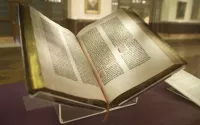
Books are a means of storing information as text or...

War is defined as an armed conflict involving the organized...
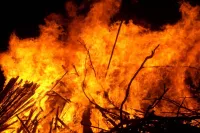
Fire is a rapid oxidation process called combustion releasing heat...
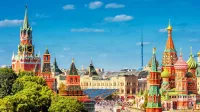
Moscow is the capital and largest city of Russia located...

A funeral is a ceremony for the final disposition of...
Trending
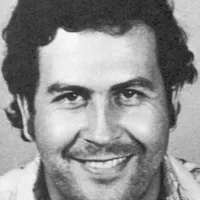
2 months ago Virginia Vallejo, Pablo Escobar's ex, reveals health struggle: Suffered a brutal stroke.

7 months ago Jake Gyllenhaal's 'Othello' Snubbed by Tony Awards Despite Box Office Success with Denzel Washington.
8 days ago World Cup 2026 Draw: Brazil in Group C, France's Path

Maisie Williams is an English actress who gained widespread recognition for her role as Arya Stark in the HBO series...

2 months ago Dakota Johnson's Epic Response to 'Naked Dress' Queries and Red Carpet Fashion
21 days ago SpaceX Falcon 9 Launches Starlink Satellites from Cape Canaveral on 150th Mission.
Popular

Candace Owens is an American conservative political commentator and author...

Ilhan Omar is an American politician currently serving as the...

XXXTentacion born Jahseh Dwayne Ricardo Onfroy was a controversial yet...

Tom Cotton is an American politician and Army veteran currently...
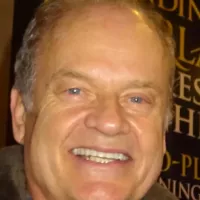
Kelsey Grammer is an accomplished American actor producer and singer...
The Kennedy Center Honors are annual awards recognizing individuals and...
